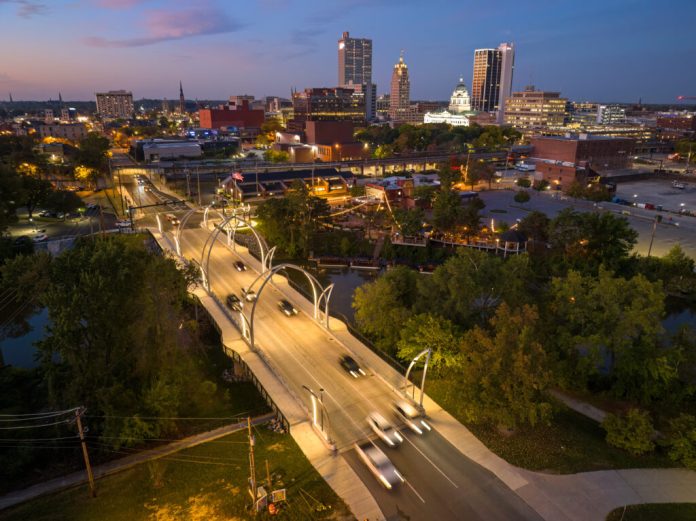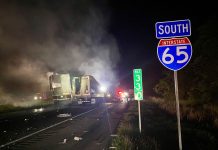| Indiana Capital Chronicle
For The Republic
INDIANAPOLIS — The Indiana Department of Transportation (INDOT) has raised the cap on its popular Community Crossings Matching Grant program to $1.5 million from $1 million.
Local government advocates say they’re grateful for the award bump and program generally, but want to tweak how it’s structured.
INDOT Spokeswoman Natalie Garrett said the higher cap is, for now, a pilot for 2024’s two calls for projects. The first is due Jan. 31.

“The increase is based on current and projected gas tax and (electric vehicle and) hybrid registration revenue that is earmarked for Community Crossings. INDOT will reassess the pilot program at the end of 2024,” she told the Capital Chronicle via email.
Garrett said she couldn’t provide a specific dollar amount for the Community Crossings funds available in 2024 versus the year prior. She cited fluctuations in gas tax and registration numbers.
Advocates favored the boost.
“We certainly don’t want to see any of the tax dollars invested into the program go unspent this year when there are always infrastructure needs across all 92 counties,” said Ryan Hoff, the Association of Indiana Counties’ director of government affairs and its general counsel.
“If there is funding available even at the higher cap amount to meet the amounts requested by local governments, then let’s get that money invested in infrastructure as was intended,” he added, via email.
Jenna Bentley, government affairs director for Accelerate Indiana Municipalities, called the program “transformational for the state” in an interview.
But — “Increasing the cap, it’ll be interesting to see who’s able to take advantage of that,” she said.
The program, launched in 2016, provides funding to local units of government across Indiana for road and bridge projects.

Cities and towns with populations below 10,000 people must put up 25% of project costs and the state will furnish a 75% match. If they’ve got more than 10,000 people, it’s a 50-50 deal.
Similarly, counties with less than 50,000 people must pay 25% and those with above 50,000 must pony up 50%.
“I think (the higher cap) will help larger communities who have been asking for additional funding … That $1 million cap is just potentially a drop in the bucket of their overall funding needs,” Bentley said.
“But smaller communities, you know, I had a call with some city engineers and I don’t think very many will be able to take advantage of that $1.5 million cap,” she added.
It took one of her organization’s member communities — a town of 500 — about seven years to save up for a 25% project match. Others with populations slightly above the 10,000-resident divider may struggle to make the higher 50% match, as opposed to communities with hundreds of thousands of people.
And many communities in recent years have used federal pandemic-era dollars to afford their matches. But that money must be obligated by the end of 2024 and spent by the end of 2026.

Bentley floated the idea of lowering the match for smaller units of government at a November meeting of a key two-year road funding task force.
The Association of Indiana Counties has also noted that the program’s short timelines complicate bridge projects, which it says take longer to develop.
Counties are responsible for all bridges over 20 feet in length.
Hoff wrote that he anticipated the task force would continue analyzing the program’s parameters in its future hearings.
Community Crossings has become a focus for the task force, which must come up with long-term transportation funding solutions.
The program’s fund could become flush with cash if electric and hybrid vehicle registrations rise. Since those vehicles use less or no gasoline, the state’s main road fund would miss out.
The task force will likely begin meeting again after the ongoing legislative session concludes in March.
— The Indiana Capital Chronicle covers state government and the state legislature. For more, visit indianacapitalchronicle.com.





